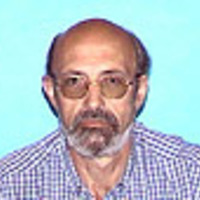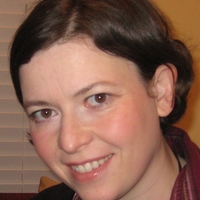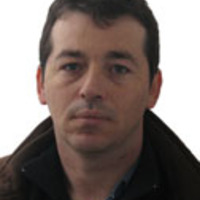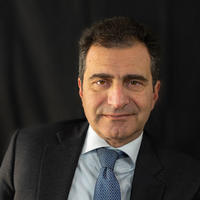Papers by Mycle Schneider
Among the nuclear facilities located on the British territory, the scenario of a targeted plane c... more Among the nuclear facilities located on the British territory, the scenario of a targeted plane crash on BNFL’s Sellafield facilities would be the most extreme in terms of impact on the environment and public health: the spent fuel reprocessing facilities in Cumbria represent an inventory of radioactive substances several orders of magnitude larger than that of a nuclear power station. The site is used to store hundreds of cubic meters of liquid high level waste, thousands of tons of irradiated fuel, tens of tons of separated plutonium.
Titre : Global Nuclear Power Database Mots-cles : #Nucleaire #Energie #Interactif Parution : The ... more Titre : Global Nuclear Power Database Mots-cles : #Nucleaire #Energie #Interactif Parution : The Bulletin of the Atomic Scientists Auteur·es : Julie Hazemann, Philippe Rekacewicz, Philippe Riviere, Mycle Schneider Date de creation : janvier 2017 Sur les 55 chantiers de construction de reacteur en cours dans le monde, combien sont en retard sur les previsions ? Quels sont les 13 pays qui construisent des centrales nucleaires ? Quels sont les principaux fournisseurs industriels de technologies ? (...)
The Spanish radioactive waste management agency ENRESA was set up in 1984 in order to organise th... more The Spanish radioactive waste management agency ENRESA was set up in 1984 in order to organise the management of spent fuel, radioactive waste and decommissioning activities of nuclear facilities. The Royal Decree 1349/2003 updates ENRESA's responsibilities, including processing, conditioning, removal and transport of nuclear waste, the establishment of a system for the long-term management of nuclear waste, and the management of financial resources. ENRESA, a public sector company, will soon be transformed from a Public Limited Company (S.A.) into a Public Business Entity (EPE). By doing so, the state tends to increase its control over the company and to simplify the organisational scheme.
Title: Global Nuclear Power Database Keywords: #Nuclear #Energy #Interactive Appearance: The Bull... more Title: Global Nuclear Power Database Keywords: #Nuclear #Energy #Interactive Appearance: The Bulletin of the Atomic Scientists Authors: Julie Hazemann, Philippe Rekacewicz, Philippe Riviere, Mycle Schneider Created: January 2017 How many of the 55 reactors currently under construction in the world are behind schedule? Which 13 countries are building nuclear power plants? Who are the technology providers? How long did it take for a specific reactor to be connected to the grid? (...)

along with Japan's Jinzaburo Takagi, he received the Right Livelihood Award, also known as th... more along with Japan's Jinzaburo Takagi, he received the Right Livelihood Award, also known as the " Alternative Nobel Prize. " Antony Froggatt works as independent European energy consultant based in London. Since 1997, he has worked as a freelance researcher and writer on energy and nuclear policy issues in the EU and neighboring states. He has worked extensively on EU energy issues for European governments, the European Commission and Parliament, environmental NGOs, commercial bodies, and media. He has given evidence to inquiries and hearings in the parliaments of Austria, Germany, and the EU. He is a part time senior research fellow at the Royal Institute of International Affairs – Chatham House in London. Antony works intensively with environmental groups across Europe, particularly on energy markets and policy and helped to establish a network on energy efficiency. He is a regular speaker at conferences, universities, and training programs across the region. Prior to...

Paris, London, July 2015 © A Mycle Schneider Consulting Project Cover page and layout created by ... more Paris, London, July 2015 © A Mycle Schneider Consulting Project Cover page and layout created by Noëlle Papay This page is intentionally left blank The project coordinator wishes to thank Antony Froggatt and Steve Thomas for their creativity and unbeatable reliability in their numerous contributions over many years. Thanks also to the new contributing authors Tadahiro Katsuta and M.V. Ramana who managed to author pertinent sections, limited in size, on issues that would each have justified a book. A special thank you to Jonathon Porritt for his thoughtful and engaged foreword. A big chunk of the success of this project is due to its visibility through the graphic illustrations based on the project database designed and maintained by data engineer Julie Hazemann. Nina Schneider extended meticulous verification to background research that contributed a fair share to the result. Thank you both.
A detailed review of the status of the world nuclear industry with particular emphasis on economi... more A detailed review of the status of the world nuclear industry with particular emphasis on economic aspects.
World Scientific Encyclopedia of Climate Change
The Technological and Economic Future of Nuclear Power, 2019
The following chapter is based on the World Nuclear Industry Status Report 2018 (WNISR2018). The ... more The following chapter is based on the World Nuclear Industry Status Report 2018 (WNISR2018). The annual WNISR is a comprehensive assessment of the status and trends of the global nuclear power industry.
PROKLA. Zeitschrift für kritische Sozialwissenschaft
The international nuclear lobby is constantly talking about a nuclear renaissance. But nuclear po... more The international nuclear lobby is constantly talking about a nuclear renaissance. But nuclear power is rather in the dusk than in the dawn. Missing industrial capacities, skyrocketing costs for raw materials and new nuclear power plants, the dramatic skilled worker/manager shortage and a sceptical financial sector are the main problems of nuclear industry. And nuclear technology as saviour against global warming is no good either.

Bulletin of the Atomic Scientists, 2008
The average construction time of the 34 units that started up in the world between 2003 and July ... more The average construction time of the 34 units that started up in the world between 2003 and July 2013 was 9.4 years. Reactor Status and Nuclear Programs • Startups and Shutdowns. Only three reactors started up in 2012, while six were shut down 10 and in 2013 up to 1 July, only one started up, while four shutdown decisions-all in the U.S.-were taken in the first half of 2013. 11 Three of those four units faced costly repairs, but one, Kewaunee, Wisconsin, was running well and had received a license renewal just two years ago to operate up to a total of 60 years; it simply became uneconomic to run. As of 1 July 2013, there were only two reactors operating in Japan and how many others will receive permission to restart and over what timeframe remains highly uncertain. • Newcomer Program Delays. Engagement in nuclear programs has been delayed by most of the potential newcomer countries, including Bangladesh,
Energy & Environment, 2006
... ENERGY & ENVIRONMENT VOLUME 17 · NUMBER 3 · 2006 ISSN 0958-305X SPECIAL ISSUE... more ... ENERGY & ENVIRONMENT VOLUME 17 · NUMBER 3 · 2006 ISSN 0958-305X SPECIAL ISSUE Energy Policy and Nuclear Power - 20 Years after the Chernobyl Disaster Guest Editors: LutzMez Steve Thomas Mycle Schneider 00_Contents.qxd 4/7/06 1:20 pm Page i Page 2. ...











Uploads
Papers by Mycle Schneider